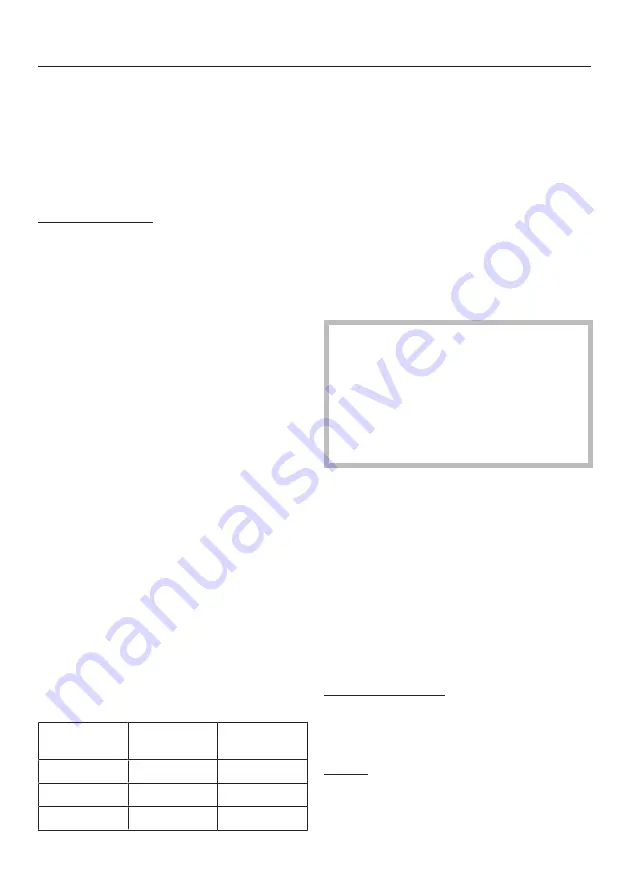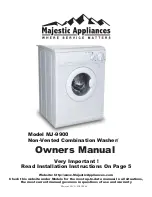
Detergent
45
The correct detergent
All detergents produced for automatic
washing machines are suitable. Follow
the manufacturer's instructions and
dosage recommendations on the pack-
aging.
For users in Asia:
please use a low foaming detergent
suitable for use in front-loading ma-
chines
The right amount to dispense
will depend on the following:
- the soiling level of the load
- the quantity of the laundry
- the water hardness level.
Check with your local water supplier
if you do not know the hardness level
in your area.
Water softeners
A water softener can be used to cut
down on the use of detergents in areas
with water hardness levels II and III.
Dispense according to the amount spe-
cified on the packaging. First add deter-
gent and then the water softener.
You can then use the recommended
amount of detergent for water hardness
level I.
Water hardness levels
Hardness
scale
Hardness level
in mmol/l
German scale
°d
I (soft)
0 – 1.5
0 – 8.4
II (medium)
1.5 – 2.5
8.4 – 14
III (hard)
above 2.5
above 14
Dispensing aids
Use dispensing aids, (e.g. balls) if these
are supplied with the detergent, particu-
larly when using liquid detergent.
Refill packs of detergent
When purchasing detergent buy refill
packs wherever possible. This helps re-
duce the amount of waste packaging.
Colour run and dye removers/
dyes
Damage due to colour run/dye
removers.
Colour run and dye removers can
cause corrosion in the washing ma-
chine.
Do not use colour run or dye re-
movers in this washing machine.
Dyes suitable for use in domestic wash-
ing machines can be used. However,
please note that the salt used in the
dyeing process can cause corrosion to
stainless steel components in the ma-
chine if you use dye frequently. Always
follow the dye manufacturer’s instruc-
tions carefully.
Fabric conditioner and liquid
starch
Fabric conditioner
makes garments soft to handle and
helps prevent static cling when tumble
drying.
Starch
stiffens and gives body to items of laun-
dry, e.g. shirts, tablecloths and bed
linen.
















































